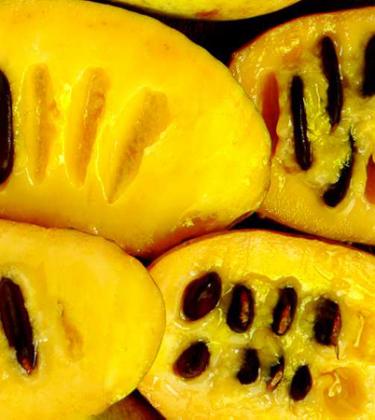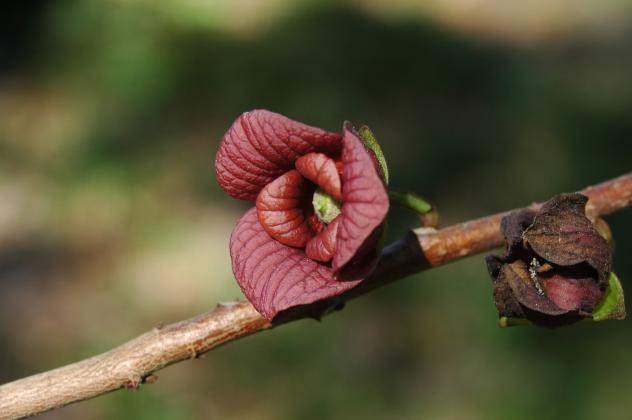Asimina triloba - Way down yonder in the pawpaw patch
Backyard Horticulture
Asimina triloba, paw-paw, is a North American native having the largest edible fruit indigenous to the U.S. not counting gourds. Pawpaw trees are from 5 to 30 feet. The traditional folk song says, “way down yonder in the paw-paw patch.” Even though we see individual trees, the patch is often connected by underground roots and are genetically identical, a single plant. The National Park Service, NPS, nps.gov, has more information in their article “Pawpaw: Small Tree, Big Impact”.
Leaves, about 12 inches long and 3 to 6 inches wide, spiral at the ends of the branches. The 1 to 2-inch flowers, emerging before the leaves, turn from light green to dark brown or purple. Petals are arranged in a triangle. Shaped like a fat banana, the green fruit, a berry weighing up to 16 ounces, turns yellow or brown when ripe. The yellow pulp is sweet and soft. Its taste is described as similar to a banana and mango. One common name is custard apple. Critters, including humans, enjoy the nutrient-rich fruit. Seeds should not be eaten.
The flowers smell like rotten meat which attracts its pollinators, flies and carrion beetles. Some people experience contact dermatitis when handling pawpaws. Chemicals in the plant are used as insecticides and in lice treatments. Pawpaws are in the Food and Drug Administration Poisonous Plant Database at fda.gov.
A pawpaw story comes from “The Journals of Lewis and Clark 1804 - 1806” by Meriwether Lewis and William Clark. In 1803 the U.S. acquired land from France, the Louisiana Purchase. President Thomas Jefferson commissioned an exploratory expedition lead by Lewis and Clark. It began in Pittsburgh, PA and went to the Pacific coast. Near the end of the return journey the men found ripe pawpaws, loaded them into their boats and continued down the river. Soon after, some of the men experienced painful eye irritation.
The September 19 and 20, 1806 uncorrected journal entries by Clark said, “The cause of this complaint of the eye I can’t account for from it’s Sudden appearance I am willing to believe it may be owing to the reflection of the Sun on the water... As three of the party was unabled to row from the State of their eyes we found it necessary to leave one of our Crafts and divide the men into the other Canoes, we left the two Canoes lashed together.”
Three days later they successfully ended their journey in St. Louis on September 23, 1806. There is disagreement about the cause of the men’s condition as the sun’s reflection had not previously caused the problem. Some believe that it was infectious conjunctivitis, red eye. Others say the men rubbed their eyes after handling paw-paws which are now known to cause dermatitis in some people. But why weren’t other parts of their body affected? NPS has an article, “PawPaw Sickness on the Lewis and Clark Expedition”. The entire Lewis and Clark journal is at gutenberg.org .
Deborah Richardson is a freelance reporter for The Examiner with a fondness for flora in its natural setting.



